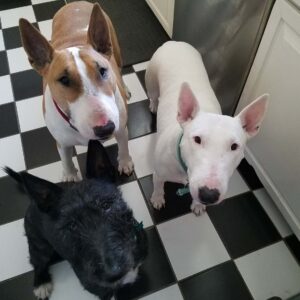Ah, the holidays: Festive lights on trees, candles on menorahs or kinaras, hosting holiday parties and gifts galore. And the end-of-year holidays aren’t one and done. Kwanzaa is seven days, Hanukkah is eight, and the Christmas season often extends over a month. Rover may be unruffled by all the hubbub or could start demonstrating behavior issues that put him on your naughty list.
“As with people, dogs are more relaxed with routine and can become more sensitive to changes in their environment during the hectic holiday season,” points out Kristen Collins, vice president of the ASPCA Behavioral Rehabilitation Center in Weaverville, North Carolina. “Children are off from school or college-aged children come home for the holidays, causing the household to become more active and leaving parents with less time for the dog due to typical holiday tasks and events.”
There are five common ways dogs may change their behavior when it comes to those year-end activities, each with proactive solutions.
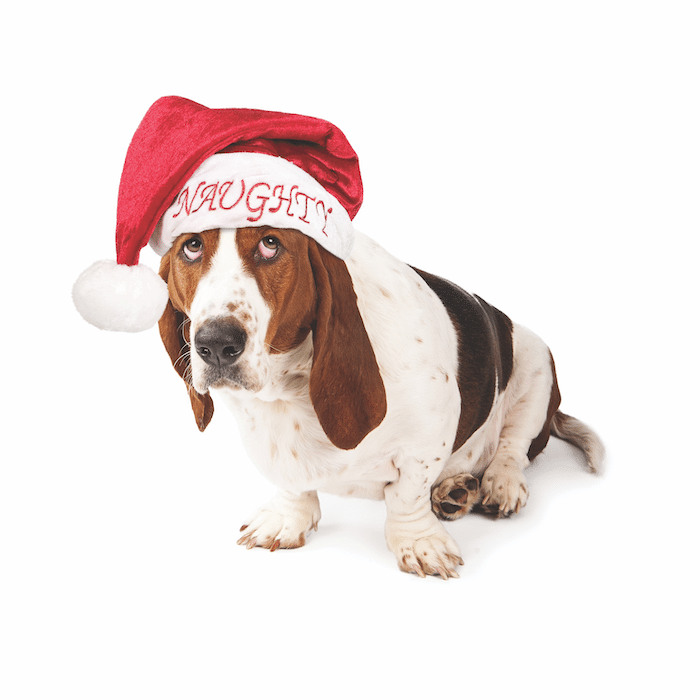
More may not be the merrier
“Dogs that haven’t gotten used to guests/visitors may have a harder time during the holidays if your household sees greater numbers of people,” says Steven Appelbaum, founder, president and CEO of Animal Behavior College, in Valencia, California.
“Dogs may appear to become more ‘needy’ than usual by exhibiting behaviors like nudging to be petted or jumping up and/or barking for attention,” Kristen says. “Some dogs might exhibit behaviors that they never usually exhibit in order to deal with anxiety, such as chewing on objects or relieving themselves indoors.
“If your pet is not used to having a lot of people around, especially small children, make sure that they have a safe space to take a ‘time-out,’” Kristen adds. “Not all dogs like children, and not all children understand how to behave around dogs.”
Steven suggests, “Select a spot that still allows the dog to be engaged and part of the group but prevents them from jumping on the couch or getting in the way when lots of folks are visiting.”
You can take the perfect spot for Spot’s time-out a step further. “Teaching your dog to be comfortable settling in a quiet room away from the activity in advance of the holidays can be extremely beneficial for all,” Kristen says.
“For dogs, this may be a room of their own or a kennel away from all the activity. Make sure that they have a bowl of water and, if appropriate, a puzzle ball or chew toys to keep them happy and occupied. If your dog isn’t used to relaxing on her own, isolating her in a bedroom because she is ‘acting out’ during the holidays can cause the dog to become more stressed and agitated as a result.”
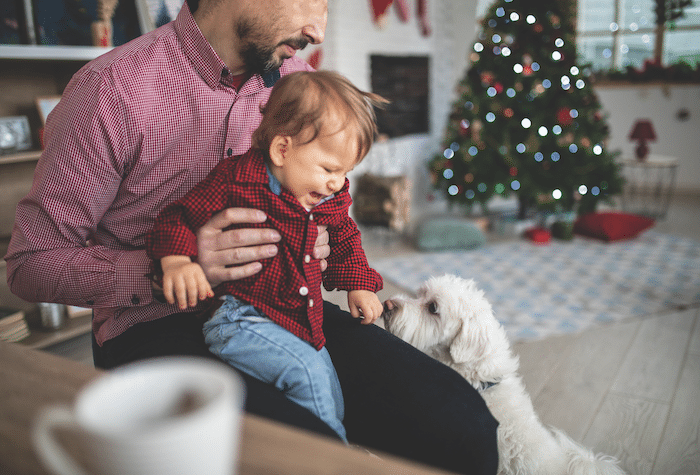
Steven gives additional homework to get started on early. “Teach dogs to greet guests on a leash so you can control their exuberant behavior. Encourage dogs to sit for greetings as opposed to jumping.”
Canine company
Adding another dog to your household, whether for an evening or for the 12 Days of Christmas, requires some forethought to prevent the fur from flying. “Introduce them in neutral territory first,” Steve recommends. “Let them get used to each other there before bringing everyone home.” But what if your aunt, who was invited to stay with you, shows up at the front door with her dog, who was not? Steven says the best thing in this situation is to take both animals on a walk. “By doing this, you can still introduce them in neutral territory.”
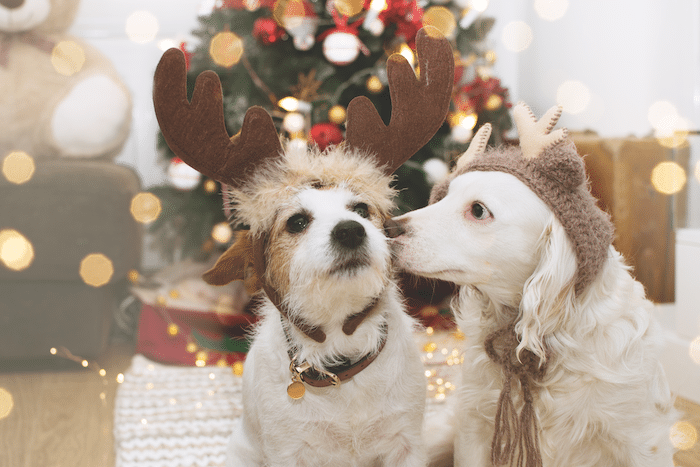
Kristen points out: “Dogs that enjoy the company of dogs will typically do well with polite, well-socialized dog guests.” She adds that if either dog is uncomfortable with other dogs, it’s best to make other arrangements.
Kristen recommends these tips for when your dog has a temporary roommate:
- Ensure that the resident dog has access to quiet areas away from the canine guest and vice versa.
- Teach the dog where to relieve herself and how to get outside to avoid elimination problems in a new home.
- If one dog is having a difficult time with the other dog (young dogs like to play more frequently than older dogs, for example), monitoring the dogs may be critical to avoid a fight.
Additionally, don’t leave food bowls or toys around when dogs first come visiting to avoid possessiveness issues. And if your dog is possessive around food, feed them separately, including when giving treats.
If your dog is the guest, use the above introduction techniques. Plus, bring some familiar sights and smells, such as a blanket, toys, food and bowls (set up in a separate space). “Familiarity can help the dog relax,” Kristen says.
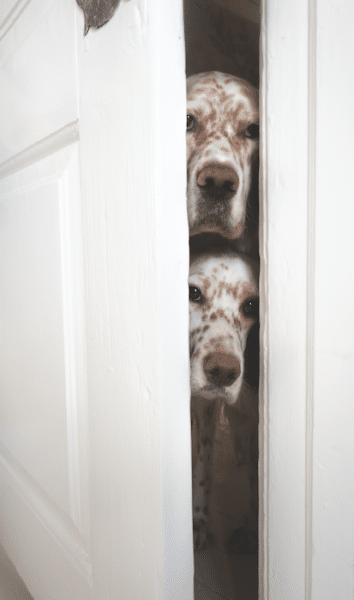 Escape artists
Escape artists
Dogs who haven’t learned proper boundaries might be more prone to escaping behaviors due to the increased traffic some households see at that time of year. This can include people lingering at front doors and yard gates, creating more frequent opportunity and desire. Again, vigilance is key.
Been wanting to try that new GPS canine tracking device? If you have an escape artist and you have visitors staying at your house, this might be time to invest in one.
Separation anxiety
Holiday parties straight from the office several evenings a week, day-long shopping sessions and other dramatic changes can wreak havoc on a dog prone to separation anxiety. Kristen says that counterconditioning, a method that teaches your dog to see that certain people or feared situations actually result in something good, can help dogs with mild separation anxiety.
“To develop this kind of association, every time you leave the house, you can offer your dog a puzzle toy stuffed with food that will take him at least 20 to 30 minutes to finish,” she adds. “Be sure to remove these special toys as soon as you return home so that your dog only has access to them and the high-value foods inside when he’s by himself.” (Of course, if you have multiple dogs and one is a food guarder, treat-stuffed toys are out. Speak to a behaviorist or trainer about other options.)
Moderate cases can benefit from many short separations, then gradually increase the duration of the separations. Kristen stresses these should be gradual, over many weeks of daily sessions. Consider starting around Halloween so your dog has plenty of time to adjust.
How to start? Steven outlines some specific techniques. “Start for two minutes and work up from there. Avoid emotional homecomings and departures. Get the dog used to you going through the motions of departure, grabbing your keys, putting on a jacket, whatever your routine is prior to departure but then instead of leaving, simply stay. If you do this three or four times a day, after a few weeks the dog won’t look at your departure rituals in the same fashion and will likely become far less stressed when you go through them.”
Both experts recommend using a specialist for severe cases or if you’d just like some extra guidance. “For help designing and carrying out a desensitization and counterconditioning plan, consult a certified applied animal behaviorist (CAAB or ACAAB) or a board-certified veterinary behaviorist (Dip ACVB),” Kristen says. “If you can’t find a behaviorist, you can seek help from a certified professional dog trainer (CPDT).”
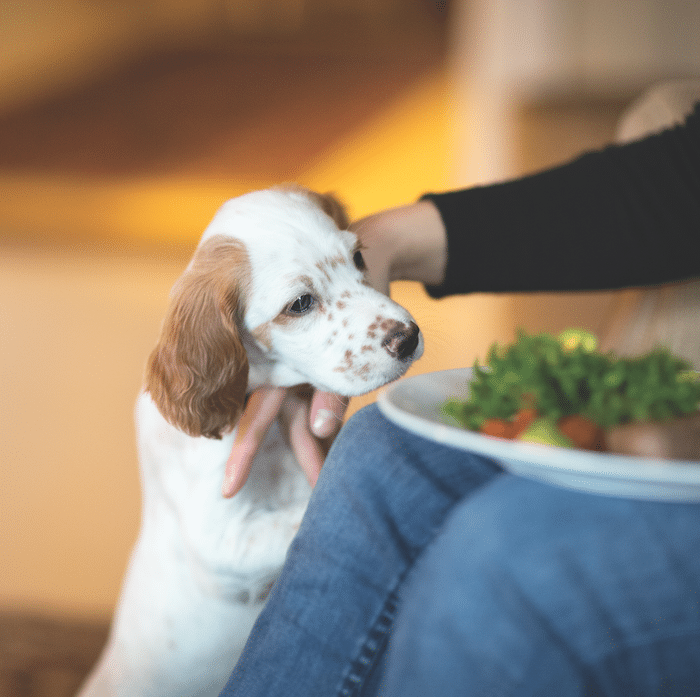
Food fiascos
Let’s face it: Food is part of any holiday party, as well as common hostess gifts. Equally obvious: Dogs love food. “Holiday treats abound in November and December, and the risks of consumption increase,” Steven says. “Monitor your dog’s behavior when guests and food are present. If you have low tables and food the dog can reach, consider putting the dog in another room or in their spot until you can properly teach the dog not to touch food left in areas the dog can reach.”
Over-indulging in treats is one thing. Chocolate-covered macadamia nuts, a toxic twofer for dogs, is something far worse. So be extra vigilant to deter food-centric behavior issues when lots of seasonal food is around.
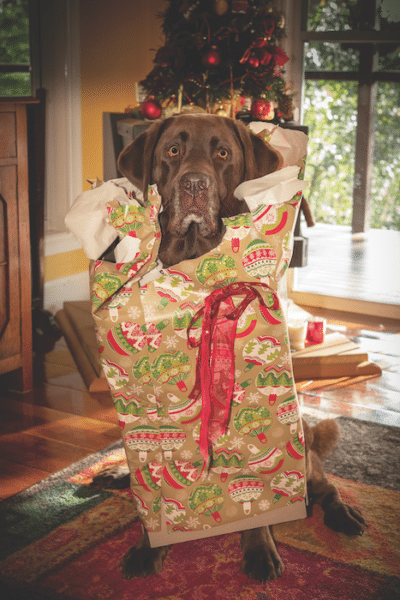
Holiday décor and dogs CAN coexist
Holiday traditions often include decorations, smells and hazards that don’t occur year-round. Don’t let your dog turn Christmas into a Winter Blunderland or Hanukkah into the Festival of Chaos.
“A little curiosity is normal,” Steven says. “Puppies and even older dogs who still like to chew are often tempted by a bewildering array of items during the holidays. “If they start tearing these items up, that’s when you have a problem. The primary solution is to teach the dog to fixate on chew toys.”
The biggest challenge — literally — is a Christmas tree and related items. Kristen suggests considering your dog when it comes to where to put the tree and what to put on it. “You may need to put a low gate around the tree or in the entryway to the room so the dog cannot access the tree unless you are there to supervise, she says. “Avoid decorating the tree with items that might entice the dog to become curious, such as gingerbread cookies. If you have valuable heirlooms, avoid hanging them on the tree until your dog exhibits disinterest in the tree.”
Douglas Firs can also present a health hazard to your furry friend if he decides to share the tree’s water bowl. “Stagnant tree water is a breeding ground for bacteria, and your pet could end up with nausea or diarrhea should he imbibe,” Kristen says.
Steven also recommends bitter-tasting sprays around the tree to make gifts and extension cords less appealing to pups. After all, no one wants to give or receive a chewed-up or peed-on present.
Trees, of course, aren’t the only challenge. A menorah shouldn’t be placed within a snooping Snoopy’s reach, or you may end up with charred whiskers. Stockings hung by the chimney with care and other decorations within reach can all be very enticing to a curious pup.
Once the holidays are over, your dog’s behavior issues may not end immediately. Kristen says that behavior problems in dogs increase in January (and August). “Work routines typically change as parents may take time off during the holidays and summer season,” Kristen says. “Try to keep the routine as consistent as possible: Don’t take your dog to every holiday event, for a ride in the car every time you go shopping, etc. Getting your dog reacclimated to the ‘work routine’ of parents before they return to work will also help the dog readjust.”
Like many aspects of the holidays, planning ahead can make things go more smoothly. Use these behavior guides to be proactive with your dog during a busy season to ensure peace on earth in your own home. Now that’s worth celebrating.


